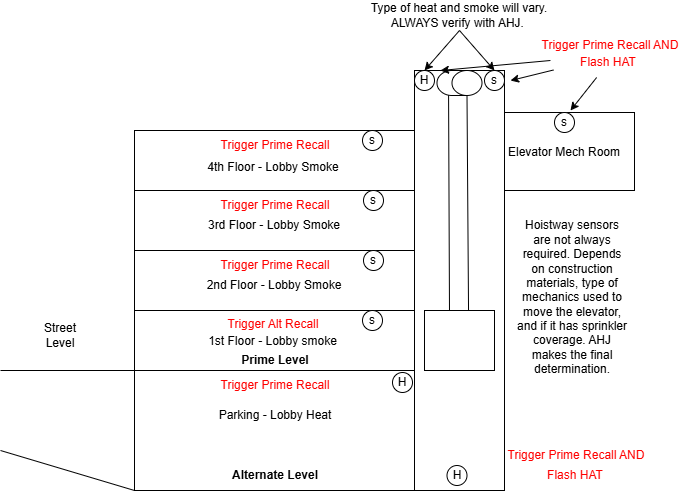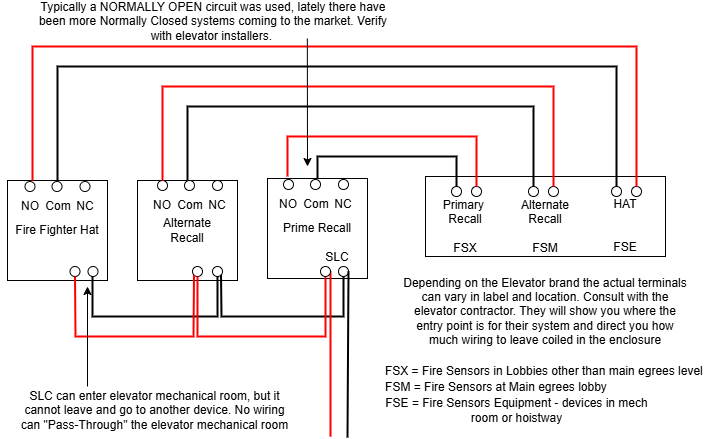Fire Alarm Wiring For Elevator Recall and Flash Hat - Part 1
The content here is for initial training or general familiarization with the topic, NOT for anyone to think they can read all the content and go install fire alarm equipment associated with elevators. That said, please enjoy!
The function of a Fire Alarm Control Panel (FACP) is not to control an elevator but to inform the elevator controller where a fire condition may be present. The elevator controller, through programming, determines the elevator's actions.
A fire alarm control panel will activate a relay based on which fire detection sensors are activated. Each relay is wired with a pair of wires in a closed or open circuit to a terminal board within the elevator controller. Typically, three relays are used to convey three fire conditions to the elevator controller: Primary Recall, Alternate Recall, and Fire Fighters' Hat (Flash Hat).

1. Primary Recall - When signs of fire, either by smoke or heat detection, are detected in any elevator lobby other than the main egress level of the building, a Primary Recall relay is activated, and the elevator will return to the Primary Egress level for that building. The doors will open and stay open. This is also known as the Designated Level and is considered a Phase 1 Condition.
2. Alternate Recall - If signs of fire are detected on the primary level, an Alternate Recall condition exists, and the Alternate Recall relay activates. The elevator controller will take the elevator to an alternate floor. This is also known as the Alternate Level and is also considered a Phase 1 Condition
3. Fire Fighters Hat - During a fire event, fire fighters have access to override the recall conditions and manually operate an elevator. While under manual control, this is called a Phase 2 Condition. If a fire condition is detected in the hoist way or elevator mechanical space, a flash hat relay is activated. Inside the elevator car and each elevator lobby panel a fire fighters hat light comes on. This informs the firefighters that elevator operation may be affected at any moment.

In large buildings, you may experience additional recall devices (smoke or heat detectors in secondary or backup prime or alternate lobby spaces). However, these three relays are very common and will be sufficient for most elevator controllers. However, it is not up to you to determine what is needed. Your plans show what you need, and they may be correct. If there is one thing common about fire systems and elevators, it is that nothing is common from one fire district to another, one city to another, one county to another, one state to another, or one week to the next. Your plans might have been correct when they were drafted, but that might have been a year and several building revisions ago. You must be able to adapt to the jurisdiction's requirements at the time of construction.